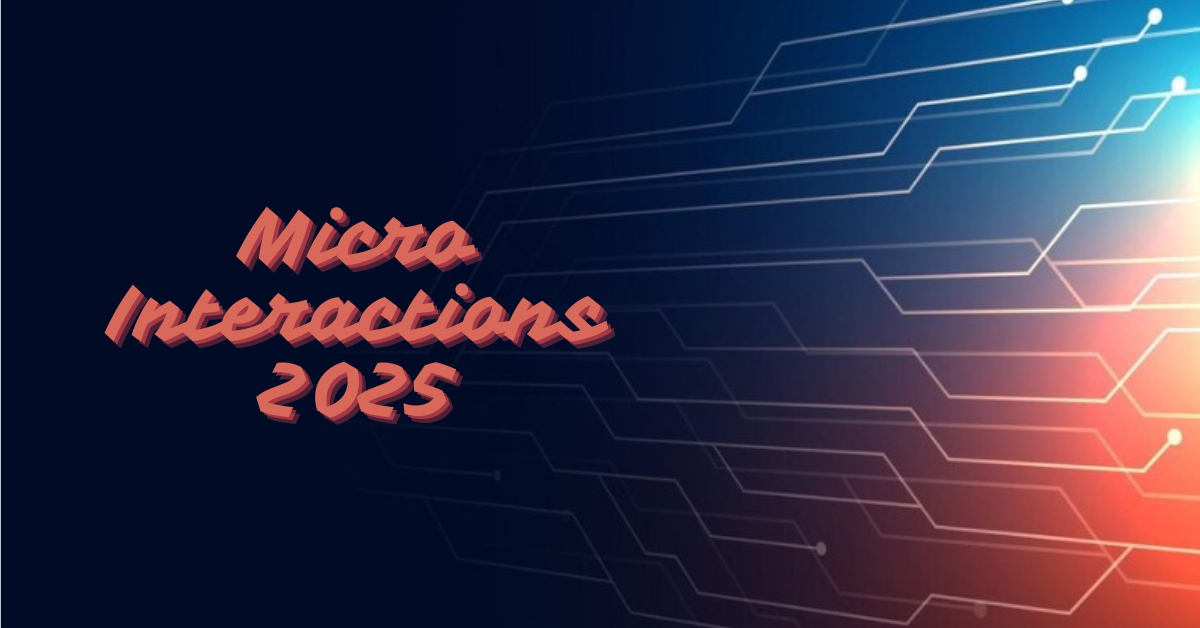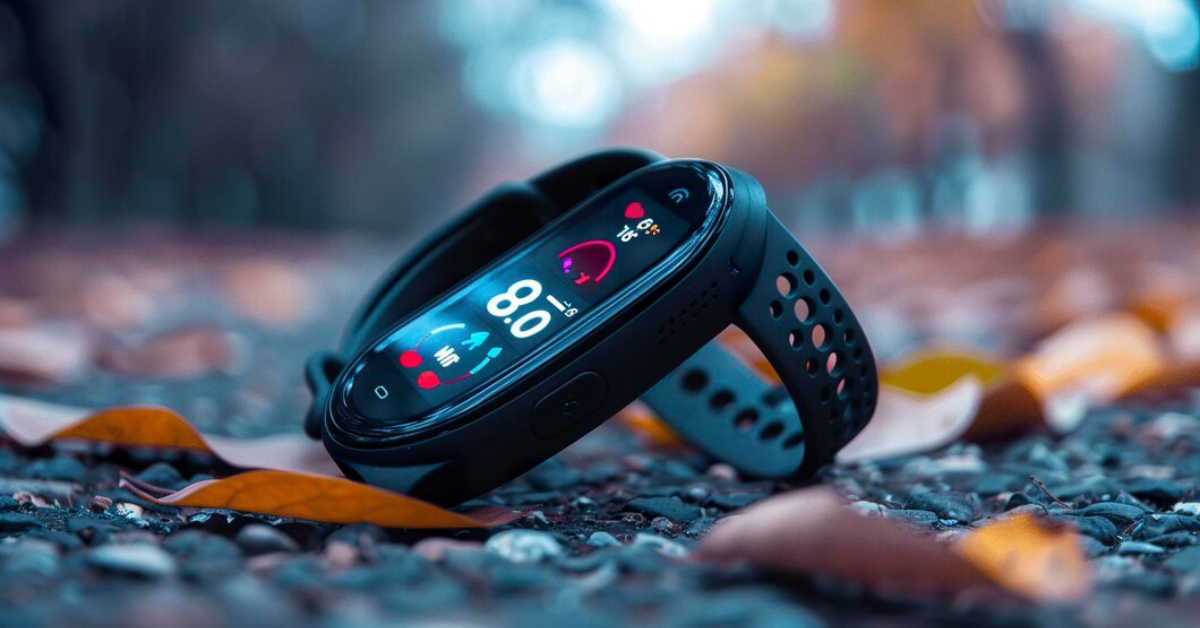In the digital world of 2025, micro-interactions are the unsung heroes that enhance user experience, driving engagement, usability, and satisfaction. Here’s how these tiny, often overlooked design elements are set to transform the future of user interactions.
Introduction: What Are Micro Interactions?
Micro-interactions are small, contained moments in a user interface that perform a single function. Think of that satisfying animation when you “like” a post on social media, the subtle vibration when you scroll to the end of a list, or the little sound your device makes when you plug in a charger. They may seem insignificant, but these tiny interactions are key to creating delightful user experiences.
By 2025, the world of micro-interactions is evolving, becoming smarter, more responsive, and deeply embedded in every aspect of digital design. As we move further into an age dominated by artificial intelligence (AI), augmented reality (AR), and hyper-personalization, micro-interactions will play an even more significant role in shaping our digital lives.
Why Micro-Interactions Matter More Than Ever in 2025
In a fast-paced, digital-first world, users expect seamless, intuitive experiences. They want apps and websites to anticipate their needs, provide feedback instantly, and make their interactions feel human-like. Micro-interactions address these needs by offering immediate, almost invisible, feedback in response to user actions.
By 2025, the way users interact with digital interfaces will be driven by:
- Speed and Convenience: Users expect real-time responses.
- Delight and Engagement: These tiny touches add a sense of satisfaction.
- Improved Usability: Micro-interactions help users navigate and understand complex systems intuitively.
- Increased Personalization: They can be tailored to the specific user, making the interaction feel uniquely designed for them.
The Psychological Impact of Micro-Interactions
Micro-interactions leverage human psychology by creating experiences that feel smooth, continuous, and satisfying. When you experience an app or a website that reacts naturally to your input, it evokes a sense of control and mastery. The small animations, sounds, and visual cues offer reassurance that your action has been registered.
In 2025, these interactions will go beyond visual appeal. They’ll enhance emotional engagement and build trust between users and technology. Imagine an AI-driven app that changes its tone or micro-interactions based on your mood, responding differently when you’re stressed versus when you’re relaxed. These subtle changes could be the difference between an app that feels cold and impersonal, and one that feels like it understands and supports you.
How Micro-Interactions Will Evolve in 2025
While micro-interactions are already widely used today, in 2025, they will be smarter, more personalized, and more immersive. Let’s take a look at the key trends driving this evolution:
1. AI and Predictive Micro-Interactions
Artificial Intelligence is changing the way we interact with technology. By 2025, AI will enable micro-interactions that are not just reactive but predictive. These micro-interactions will anticipate user needs, offering suggestions or adjustments before users even make a request.
For example, imagine using a fitness app that adjusts your workout routine based on your previous performance and physical state, giving you a micro-interaction prompt like, “Looks like you’re pushing yourself harder today, let’s adjust your routine for optimal performance.”
AI-driven micro-interactions can also create more seamless transitions between tasks. When typing an email, your interface could predict the next sentence or even suggest an attachment based on the context of the conversation.
2. Voice and Gesture-Based Micro-Interactions
With the rise of voice assistants like Alexa and Siri, voice-based micro-interactions will become a standard feature in digital experiences by 2025. These voice-activated micro-interactions will allow users to control apps and devices with simple, conversational commands.
Gesture-based micro-interactions will also gain traction. Think of the smart home devices that react to hand gestures, like waving your hand to turn off lights or swiping in the air to change a song. These physical micro-interactions will bridge the gap between the digital and real worlds, creating a more natural, fluid experience.
3. Haptic Feedback and Sensory Micro-Interactions
In 2025, micro-interactions will no longer be limited to visual and auditory cues. Haptic feedback – the use of vibrations, taps, or physical sensations – will be an integral part of the user experience. Haptic micro-interactions provide physical feedback to touch commands, offering users a richer, multi-sensory experience.
Imagine an AR gaming app that provides different haptic responses depending on the object you interact with in the game. By 2025, more sophisticated haptic technology will allow these physical interactions to feel incredibly lifelike, enhancing immersion in everything from gaming to productivity apps.
4. Hyper-Personalization
Personalization is already an important factor in digital design, but by 2025, micro-interactions will be tailored specifically to individual users in ways we’ve only begun to explore. With access to vast amounts of user data, micro-interactions can adjust to your preferences, behaviors, and even your emotional state.
A health-tracking app could provide tailored suggestions based on your habits, a news app could adjust its interface color or animations based on the time of day, and a shopping app might make subtle changes to its micro-interactions depending on your browsing patterns. The result? A highly personalized experience where each micro-interaction feels designed just for you.
5. Invisible Micro-Interactions
While many micro-interactions today are visually noticeable – like buttons changing color or icons animating – the trend toward invisibility will dominate by 2025. These invisible micro-interactions are subtle, operating in the background to enhance usability without drawing too much attention to themselves.
For instance, imagine a travel app that, while you’re scrolling through destinations, quietly adjusts flight prices in real-time and only notifies you of significant changes. Or, a banking app that automatically categorizes expenses in the background without interrupting your main task. These invisible micro-interactions reduce cognitive load, allowing users to focus on their primary tasks without unnecessary distractions.
The Role of Micro-Interactions in Different Industries in 2025
Micro-interactions will continue to play a pivotal role across various industries, shaping the way we engage with technology. Here’s a closer look at how they will impact key sectors:
1. E-Commerce and Retail
In 2025, micro-interactions will be essential to e-commerce experiences. From subtle haptic feedback when adding an item to the cart, to personalized visual cues as users browse products, these interactions will drive more intuitive and enjoyable shopping experiences.
Micro-interactions will also play a critical role in building trust.For example, when users enter payment details, an e-commerce app displays a tiny checkmark animation to confirm secure storage, providing peace of mind without disrupting the flow.
2. Healthcare and Fitness
Healthcare and fitness apps will use micro-interactions to enhance user engagement and motivation. For example, a fitness app might use positive, dynamic feedback when a user completes a workout, or subtle vibration reminders when it’s time to stand up and stretch.
Healthcare apps can leverage micro-interactions to keep patients engaged with their health data. From smooth data visualizations to personalized nudges, micro-interactions will help patients stay on top of their health goals in a non-intrusive way.
3. Education and E-Learning
In the education sector, micro-interactions will be critical for maintaining engagement and making learning more enjoyable. Interactive quizzes might offer instant feedback with subtle animations that change color based on correct or incorrect answers, while e-learning platforms might use micro-interactions to gamify the learning experience, making it more rewarding and engaging for students.
4. Finance and Banking
A banking app provides reassuring animations when a transaction is completed and uses smart, invisible micro-interactions to analyze spending trends in the background, offering tailored financial advice automatically.
5. Entertainment and Gaming
The entertainment and gaming industries have long embraced micro-interactions, and by 2025, they will take them to the next level. Games will feature more immersive haptic micro-interactions that make virtual experiences feel more realistic. Streaming services will also use micro-interactions to enhance the viewing experience, from personalized recommendations to predictive content delivery based on user preferences.
Best Practices for Implementing Micro-Interactions
As micro-interactions continue to evolve, designers and developers must follow certain best practices to ensure these interactions remain effective and engaging. Here are a few key principles to consider:
- Keep Them Subtle: The magic of micro-interactions lies in their subtlety. Overloading users with too many animations or sounds can feel intrusive and overwhelming. The goal should be to create interactions that feel natural and effortless.
- Ensure Consistency: Micro-interactions should follow a consistent logic across the user interface. For example, if one action results in a specific type of haptic feedback, similar actions should produce the same response.
- Use Micro-Interactions for Feedback: One of the primary purposes of micro-interactions is to provide feedback to the user. Whether it’s confirming that an action has been completed or offering suggestions, ensure that these interactions serve to guide and inform users.
- Prioritize Performance: By 2025, users will expect blazing-fast performance in their apps and devices. Micro-interactions should enhance the experience without slowing down the app or causing lags. Optimizing the performance of these animations is crucial.
- Test and Iterate: As user behavior changes, so too should micro-interactions. Conduct regular user testing to understand how users are responding to your design choices and be prepared to iterate based on feedback.
Conclusion: The Future of Micro-Interactions
By 2025, micro-interactions will be more than just a trend; they will be an essential part of creating intuitive, engaging, and personalized digital experiences. As technology advances, these tiny design elements will continue to evolve, enhancing every aspect of our interactions with apps, websites, and devices.
The future of micro-interactions lies in their ability to combine AI, personalization, and immersive technology to deliver a seamless user experience. Whether you’re a designer, developer, or business leader, understanding the power of micro-interactions will be crucial to staying ahead in the digital landscape of 2025.





